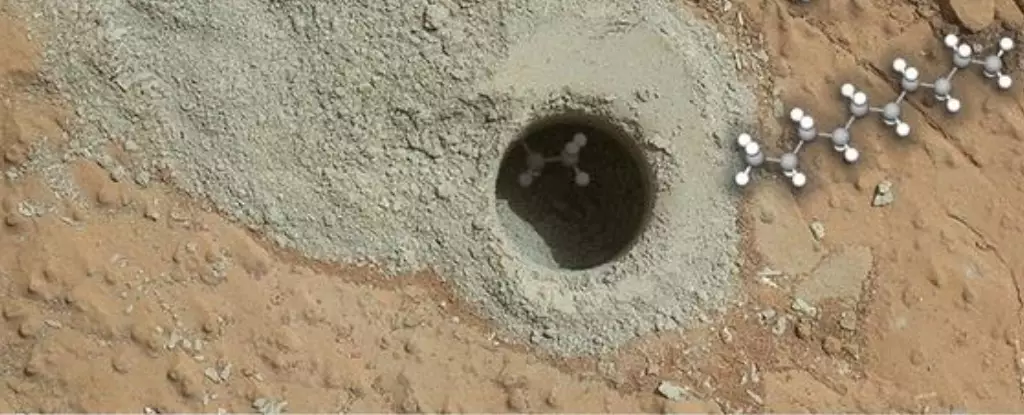The exploration of Mars has entered a thrilling new phase, as recent findings from NASA’s Curiosity rover have unveiled ancient carbon chains in sedimentary deposits that may hint at the planet’s potential for life. This significant discovery was propelled by the diligent research efforts of an international team led by Caroline Freissinet from the French National Centre for Scientific Research (CNRS). Unlike previous, more ambiguous carbon detections, these long carbon chains—consisting of up to a dozen atoms—are revealing intriguing insights into Mars’ geological and possibly biological history.
Conventional wisdom has often dictated that these compounds could arise from abiotic processes, which means they could be non-organic in nature. However, the sheer presence of such extensive saturated hydrocarbons, including decane (C10H22), undecane (C11H24), and dodecane (C12H26), raises thought-provoking questions about their origins. Could they be remnants of complex organic chemistry indicative of ancient biological activity?
The Mechanism of Discovery
Curiosity’s analytical prowess shines through the innovative techniques employed to uncover these carbon compounds. Scientists utilized a gas chromatography-mass spectrometry procedure that involved heating specimens taken from a mudstone formation named Cumberland to a scorching 850 °C (1,562 °F). This meticulous approach allowed for the controlled release of oxygen, minimizing combustion risks while facilitating the study of organic molecules housed within Martian rock.
The wealth of findings stemming from this experiment reiterates the capabilities of our technology to delve deeper into extraterrestrial chemistry. Not only have researchers confirmed the presence of long carbon chains in the Martian sediment, but they have also explored alternative routes by which these compounds could have formed—examining the transformation of simpler molecules into complex carbon structures. The implications of this are profound, suggesting that Mars may host a chemistry that echoes the building blocks of life as we understand it.
Long Carbon Chains: Implications for Life
While scientists have established that carbon chains can be formed through non-biological processes, the tantalizing possibility of their biological origins cannot be easily dismissed. Carbon-rich compounds are essential constituents of life on Earth, and their existence in Martian soil invites speculation regarding the planet’s capacity to support life forms, either in the past or present.
What adds to the intrigue is the connection between these compounds and biological markers found on Earth. For instance, our own physiology consists of a complex repertoire of carboxylic acids similar to those detected in the Martian samples. This resonance between terrestrial and Martian biochemistry tantalizes researchers with the allure of a shared chemical language—the possibility that the same building blocks might exist on both planets.
The notion that these carbon chains might represent remnants of ancient life raises ethical and existential questions: If life once thrived on Mars, what does this mean for humanity’s place in the universe? The significance of finding proof of extraterrestrial biology—or even the ingredients for life—forecasts a future where our understanding of life’s adaptability expands beyond Earth.
The Path Forward: Future Exploration
As promising as these findings are, the quest to confirm the presence of life on Mars remains an arduous journey fraught with technical challenges. The current state of exploration, as revolutionary as it may be, only scratches the surface of what lies beneath. To uncover the full narrative woven into the Martian crust, future missions will be essential. These upcoming expeditions can drive the necessary follow-up research to ascertain the provenance and context of the long-chain carbon molecules.
In a cosmic sense, the quest for understanding Mars’ potential for life propels not only scientific inquiry but also human imagination. The mere contemplation of a life-form that once roamed the Martian terrain is a powerful reminder that we are part of a broader exfoliating narrative in the universe—a narrative that beckons us to explore further into the depths of space and our own understanding of life itself. Speculating about past Martian life sparks curiosity and wonders that propel us forward, igniting dreams of exploration well beyond the mere analysis of rocks and minerals.
Our exploration of Mars has only just begun, and who knows what discoveries await us in this vast, red expanse as we continue our celestial odyssey.


Leave a Reply